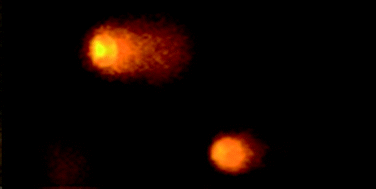 Two new HOT articles for you this week – the first comes from Lynda Webster and colleagues at Marine Scotland Science and the University of Brighton. They have investigated the fate of polycyclic aromatic hydrocarbons (PAHs) released from an aluminium smelter (from 1907 to 2000) into Loch Leven in Scotland. Using a monitoring programme that ran from 2004 to 2008, they found no evidence of recovery of PAH levels, which they predict may be due to mixing of the sediments in the basins and persistence of the hydrocarbons. In the upper basin of the loch, they found that the levels of all the PAHs investigated (apart from naphthalene) were above the Effects Range Low values, indicating there is a risk of chronic effects to marine life in the loch.
Two new HOT articles for you this week – the first comes from Lynda Webster and colleagues at Marine Scotland Science and the University of Brighton. They have investigated the fate of polycyclic aromatic hydrocarbons (PAHs) released from an aluminium smelter (from 1907 to 2000) into Loch Leven in Scotland. Using a monitoring programme that ran from 2004 to 2008, they found no evidence of recovery of PAH levels, which they predict may be due to mixing of the sediments in the basins and persistence of the hydrocarbons. In the upper basin of the loch, they found that the levels of all the PAHs investigated (apart from naphthalene) were above the Effects Range Low values, indicating there is a risk of chronic effects to marine life in the loch.
Long-term fate of polycyclic aromatic hydrocarbons (PAH) in sediments from Loch Leven after closure of an aluminium smelter
A. D. McIntosh, R. J. Fryer, L. Webster and A. B. Cundy
DOI: 10.1039/C2EM11006G
 The second comes from Christopher Faßbender and colleagues at the University of Heidelberg and RWTH Aachen University. In their paper, they introduce Gene-TEQs – genotoxicity equivalent factors that can be used to directly compare environmental samples from different studies. Three directly acting and three indirectly acting genotoxic compounds were investigated for their cytotoxic and genotoxic concentration-response profiles. One of the tested compounds was selected as the reference compound, and the effects of other substances were calculated as percentages of the maximum reference compound’s effect, allowing relative Gene-TEQs to be provided. The method was also used to compare the effects of sediment samples from the upper Danube River in the same way. The group predict that the Gene-TEQ could also be used for comparing in vitro and in vivo data, increasing our understanding of the bioavailability of pollutants.
The second comes from Christopher Faßbender and colleagues at the University of Heidelberg and RWTH Aachen University. In their paper, they introduce Gene-TEQs – genotoxicity equivalent factors that can be used to directly compare environmental samples from different studies. Three directly acting and three indirectly acting genotoxic compounds were investigated for their cytotoxic and genotoxic concentration-response profiles. One of the tested compounds was selected as the reference compound, and the effects of other substances were calculated as percentages of the maximum reference compound’s effect, allowing relative Gene-TEQs to be provided. The method was also used to compare the effects of sediment samples from the upper Danube River in the same way. The group predict that the Gene-TEQ could also be used for comparing in vitro and in vivo data, increasing our understanding of the bioavailability of pollutants.
Gene-TEQ—a standardized comparative assessment of effects in the comet assay using genotoxicity equivalents
Christopher Faßbender, Thomas Braunbeck and Steffen H. Keiter
DOI: 10.1039/C2EM10947F
Both these papers are free to access for 4 weeks following a simple registration for individual users.










